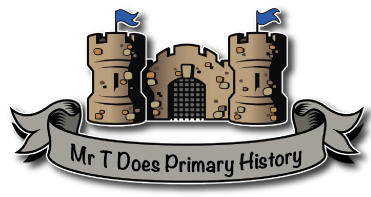This half-term (Autumn two, 23) I am teaching history to my mixed Year 5/6 class in Leeds. We’re focusing on the railway revolution under the enquiry question: How did the railways benefit Britain? This focuses on the economic and societal impact brought about because of the expansion of the network including the railway revolution of the 1840s. Whilst not explicitly stated in the EQ, this unit includes a strong element of locality as there were immense benefits brought to Leeds by the arrival of the railways.
It is broken into four sub-enquiries across the half-term:
- How did people transport things before railways?
- How quickly did the railways expand?
- What benefits did it bring to Leeds?
- Was this the same across the country?
Before Starting:
As a school, we use knowledge organisers therefore I spent time considering the layout and core content in order to allow the children, as Mary Myatt calls it, to “master the minimum.”[i] The layout and content aim to be deliberate and simple – cognitive load and efficient navigation are primary concerns throughout after all. My key principles are below having re-read pieces from Jon Hutchinson and Bev Forrest.
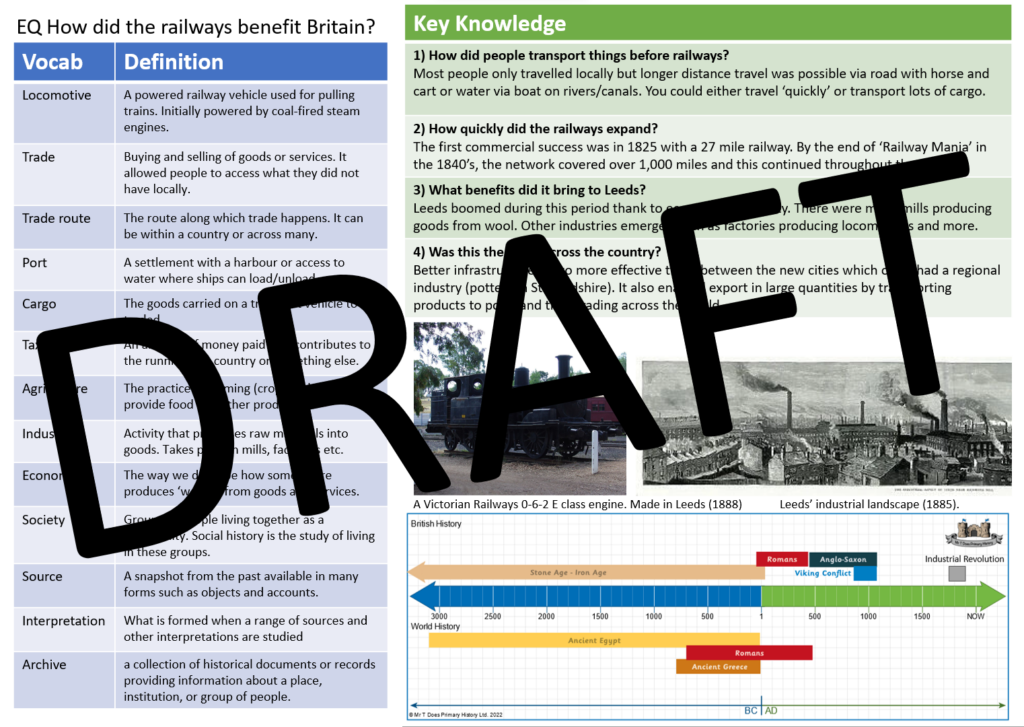
The vocabulary table was a careful balance of vocabulary quantity and importance to the enquiry. In subsequent lessons, the vocabulary will be embedded directly into the teaching and what I want the children to include in both their discussions and answers. As such, I’ll ensure I model how and when to use them at various stages.
I have divided the core knowledge to mirror the sequence of enquiry sub-questions. Whilst there is a case to be made about whether or not to give children the knowledge before starting, the school does and I can see the merit. In future teaching, this ‘minimum to be mastered’ will be reinforced, depth added and the stories connected to form a clear narrative.
The two images act as a reference point to what the children will be studying but, at the right time, a bit of a hint at the benefits the railways brought to Leeds economically and the wider industrial revolution shaping the city’s skyline. One thing I was keen to avoid was stereotypical illustration images sometimes found in resources to ensure the reality is front and centre.
The timeline highlights two things:
- The narrative of history the children have learned in order to act as a retrieval mechanism to consider the concept of the industrial revolution fundamentally changing life in Britain. A way to navigate prior history learning to consider where the children have encountered societies and economics in Britain and the wider world.
- A way to consider the relative duration of the industrial revolution and its transformative effect on the country societally and economically.
The sequence of sub-questions is done in line with what I advocate for in my book so please do consider buying a copy if you would like to know more. Broadly speaking, questions 1 and 2 above encompass worldbuilding and setting out the early narrative arc of railway expansion. This vital background (hinterland) definitely supports Christine Counsell’s assertion that “the hinterland is as important as what is deemed core.”[ii] Within these lessons, the children start by thinking about the abstract world they will be learning about and precisely how it differs from their lives in specific ways. Then, introducing the railways and expansion of the network in the early half of the 19th century. Lesson 3 and 4 provide specific depth studies to consider the societal and economic benefit that came as a result.
Activating relevant prior knowledge:
The children had encountered the concepts of the different people may have moved/migrated or traded in the past across various units of history studied. Therefore to activate relevant prior knowledge, I focused this chronologically to prompt children to think about technological trends over time. The green box is to prompt lines of thinking by starting with a heavily ‘hinted’ example of the Vikings and then a scaffolded cloze procedure. This ensured children understood most people (if they did travel distance) would have used boats and horses/carts.
This was was followed by the first introduction to direct vocabulary instruction which is a big emphasis for the unit. The fact they linked to economic history and it is a key focus throughout the unit was explained… may have even offered some class dojo bribery to get them using it! My use of icons is to help children identify concepts they have encountered before to strengthen connections and facilitate comparisons. It is not, however, dual coding as some people asked. For clarity, “According to dual coding theory, if the same information is properly offered to you in two different ways, it enables you to access more working memory capacity. This means that you can benefit from access to both visual and verbal memory capacity. It’s known as the working memory model from Baddeley and Hitch.”[iii] The role I use it for is to deliberately target the concepts I wish to emphasise to strengthen understanding over the course of the curriculum. The emphasis being on trade meant some children were connecting this concept to the previous half-term’s geography unit in which it played a role.
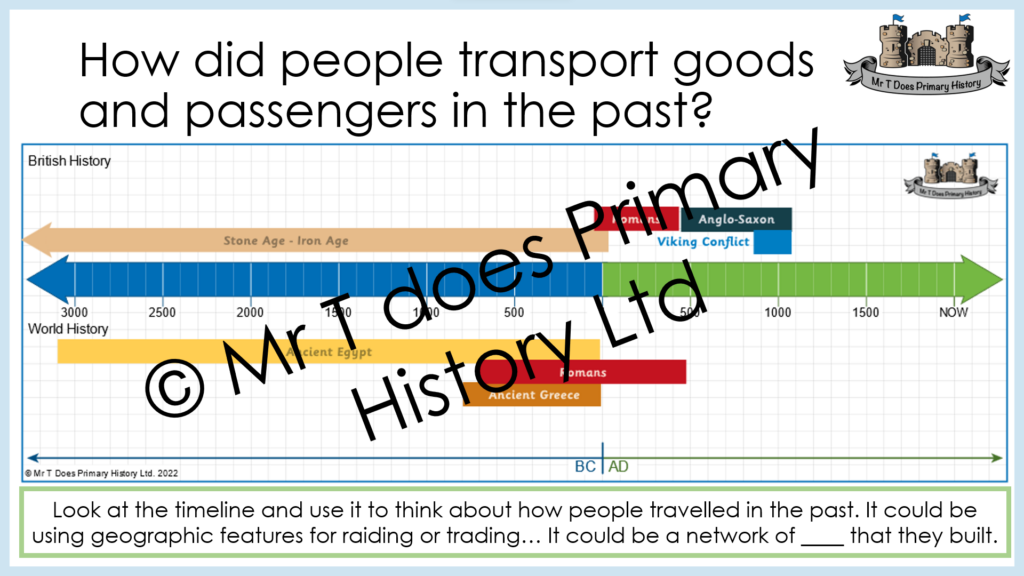
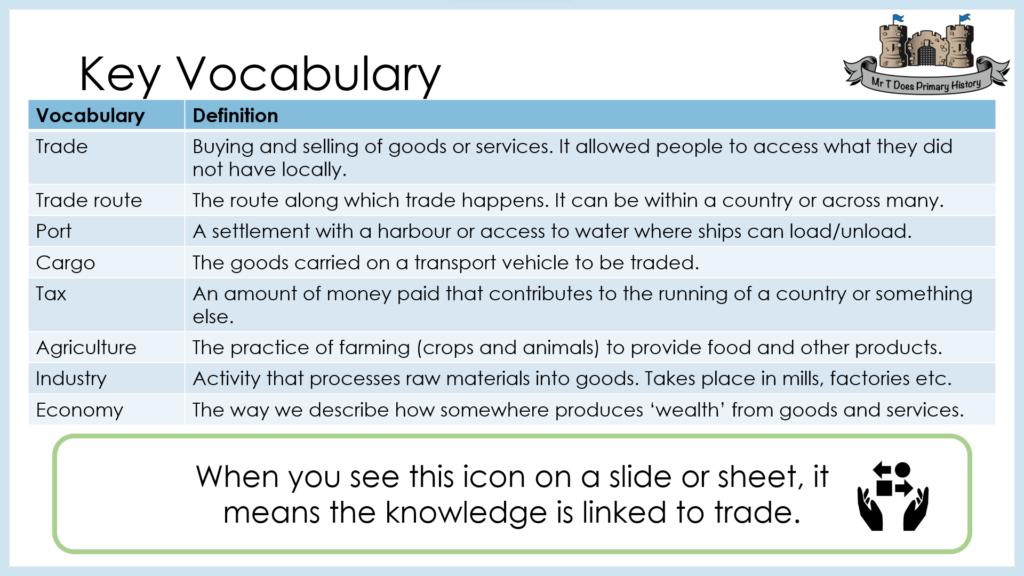
Sub-question 1 – How did people transport things before railways?
The aim of this question is to immerse the children in the abstract nature of the past using Mike Hill’s brilliant worldbuilding blog by focusing on modes of transport but also the challenges that this presented into the lives of people. This includes the retrieval outlined above but also emphasised the role of making the children focus their attention on ‘so what?’ in order to consider this aspect of teaching history. It is deliberately embedded throughout the lesson to allow me to model how it is a natural and continuous part of the historical discipline. It also was an area to develop mentioned in Summer 2023’s Ofsted subject report: Rich encounters with the past (an apt title as I always aim to facilitate this when teaching). It said: “In most schools, the disciplinary knowledge that pupils learned focused on sources and evidence. To some extent, this is a helpful approach. Knowledge of how historians use sources to construct accounts can help pupils to learn other aspects of disciplinary knowledge, such as how and why historians form different interpretations of the past.”[iv] As such, throughout the blog, you will hopefully notice repeated references to gathering relevant evidence and then utilising it. The example image below highlights the prompt to consider facts and instantly focus on the ‘so what?’
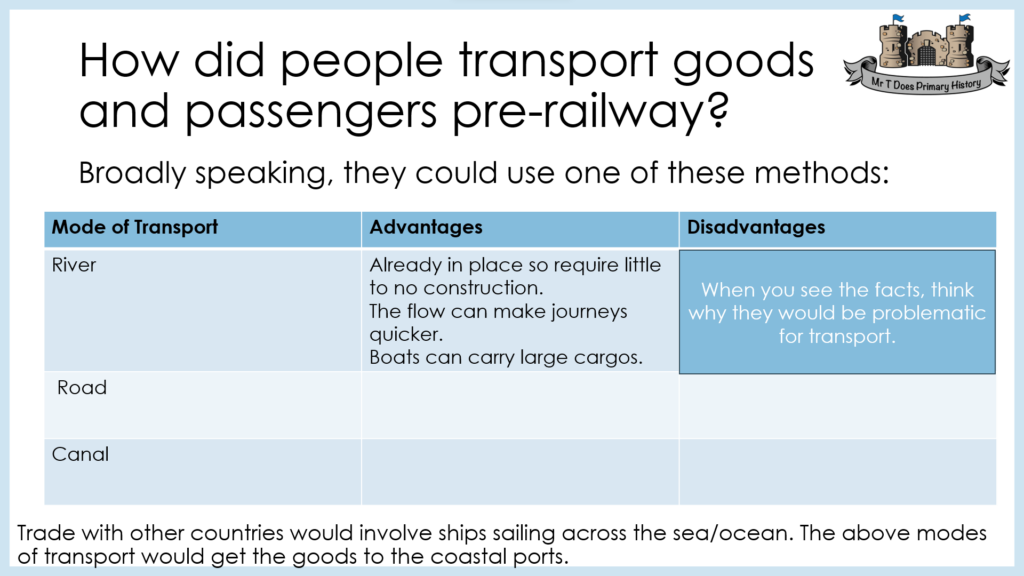
In this lesson, the children learned about pre-industrial transport to establish that in most cases you could travel relatively quickly (by the standards of the day) or transport a large quantity of cargo. A range of source material was used deliberately to subtly introduce the fact that different types of source contribute different aspects of the answer.
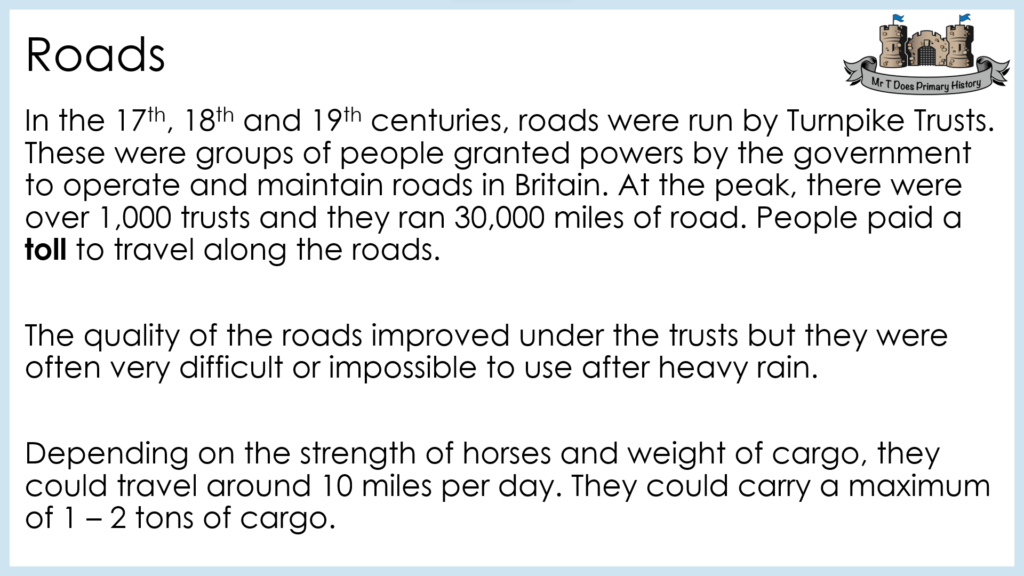
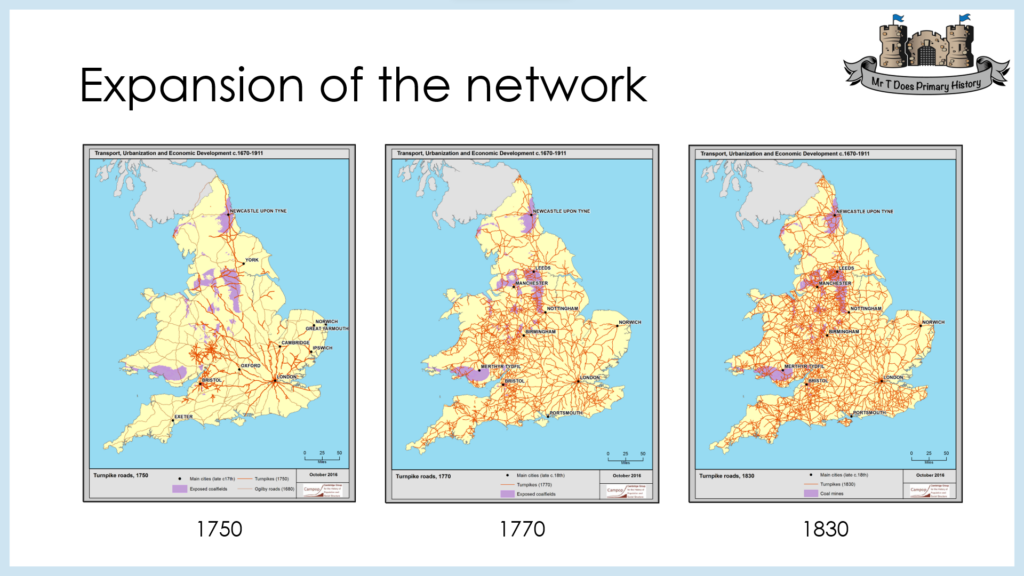
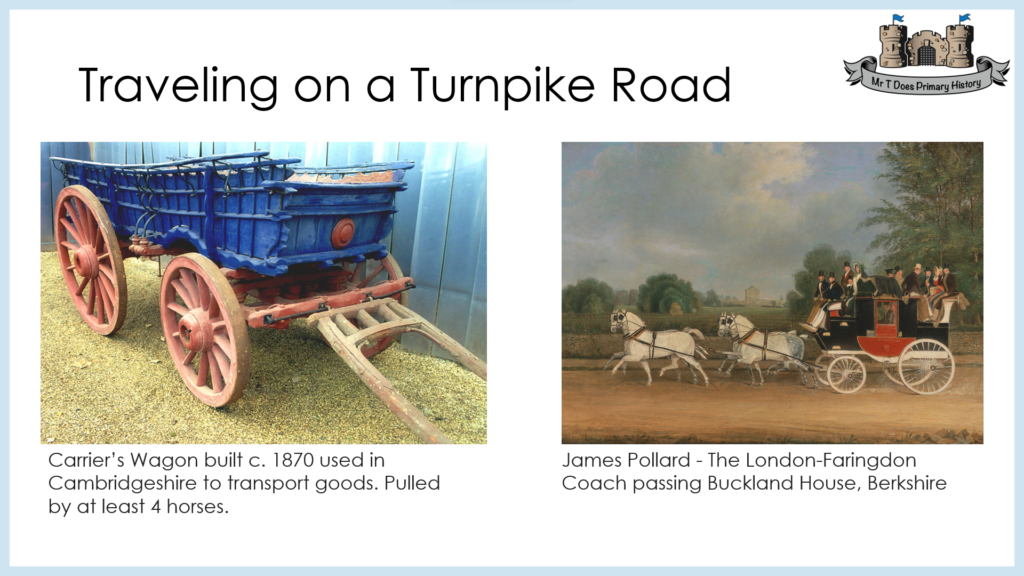
The logistics of the lesson were relatively straightforward and, if you have joined me for any CPD sessions, not surprising. I do, we do, you do and carefully scaffolded in order to obtain a high success rate and work in small steps. The lesson may have appeared collaborative but in reality I was guiding them through the unknown world and prompting them to reflect at various points with ‘so what?’ to think about the implications of what they had just learned. In short, I knew where the lesson was taking us and what the outcome needed to be. Instead of one long task or children focusing on different areas of the study then sharing outcomes, they worked in small steps to ensure a clearer picture (see above).
The earned of the lesson was the first time this class had encountered my use of a summary of learning. A simple question used to clarify core knowledge to remember: what have you learned today that could be useful for our final answer? In this case, I scaffolded using a combination of a cloze procedure and sentence stems. This level of scaffolding will be required in subsequent lessons to ensure the children are clear about how to structure short-form answers in history.
What did I want to accomplish here?
First, it was bloomin’ lovely to be teaching history again! I have missed it and am totally aware that makes me sad haha. The knowledge outcomes were as follows:
- There was a time before highspeed transport and it meant people lived very different lives.
- Transport of goods and people was usually via road, canal, river or a combination of them. The majority of people would have just walked locally and not travelled as widely as is normal today.
- Technology developed in order to improve the road, river and pure canal infrastructure.
- Broadly speaking, transport could either be quick or have a large capacity. No mode of transport had managed to accomplish both.
- History isn’t merely a case of gathering facts; we must do something with the facts in order to think about what they mean in that context.
Which of those are core and which are hinterland? Odds and events… the odds are important background that help the core (evens) to function in the context the children encounter them. For the children, that is the knowledge they encountered in the lesson. The purpose of the summary of learning is to ensure they would prioritise the importance of the evens… In a story, the narrator guides the narrative. That’s what I seek to accomplish when teaching.
Where next?
The arrival of the railways of course. With the broad intention of tapping into Daniel Willingham’s work: “From a cognitive perspective, an important factor (on whether children like school) is whether or not a student consistently experiences the pleasurable rush of solving a problem.”[v] This lesson will introduce the success of Stephenson’s rocket at the Rainhill trials (1829) and subsequent expansion of the network including railway mania in the 1840s.
[i] https://www.youtube.com/watch?v=KEESb6xZ1tg&t
[ii] https://thedignityofthethingblog.wordpress.com/
[iii] Dual Coding with Teachers by Oliver Caviglioli, P20
[iv] https://www.gov.uk/government/publications/subject-report-series-history/rich-encounters-with-the-past-history-subject-report
[v] Why don’t students like school? By Daniel Willingham, PP10-11
